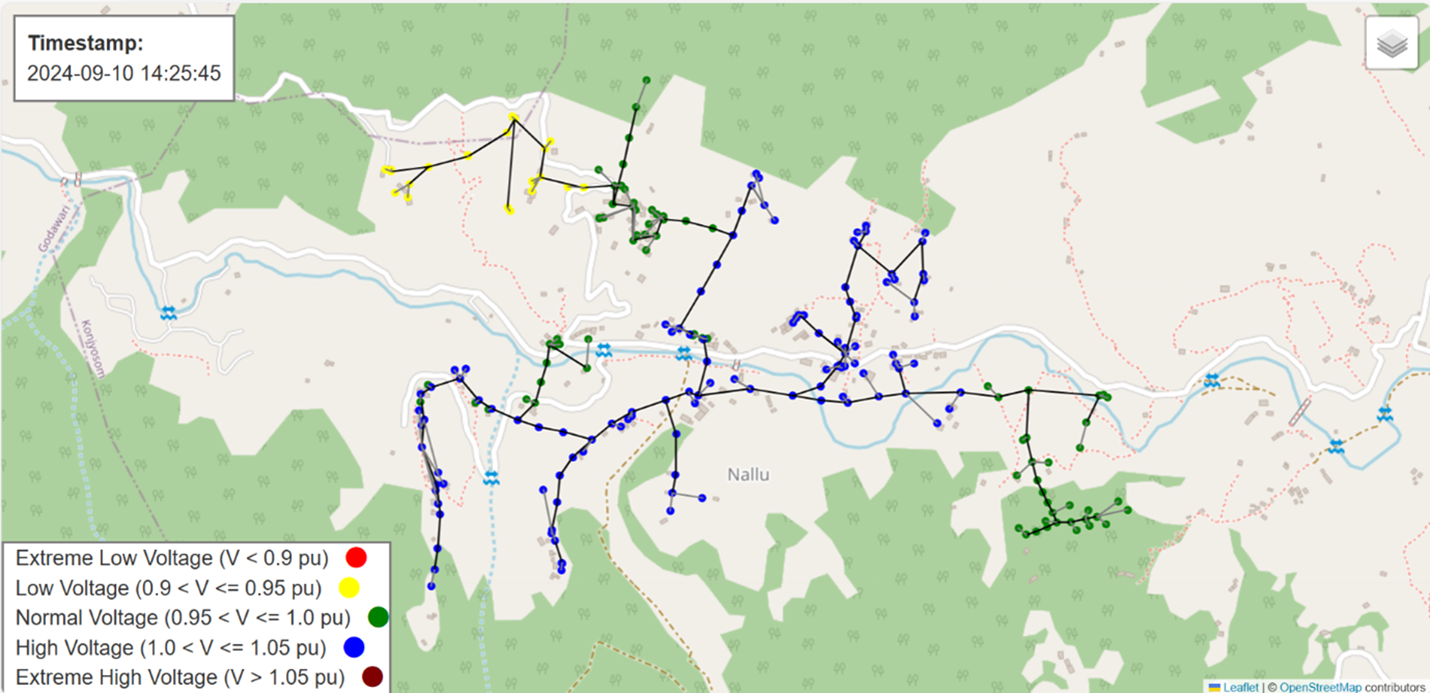Piloting distribution grid automation in Nepal: Enhancing remote monitoring & power quality
Electricity access in Nepal has reached 98% of the population, with grid electricity covering 95.03%. Despite this remarkable progress, the reliability of the power supply remains a significant concern. Owing to the radial configuration of distribution feeders, a fault in any section of the line can cause outages across large areas, creating inconvenience for users and substantial revenue losses for service providers. Furthermore, the absence of modern fault-detection technologies means that repair teams must travel long distances to locate faults manually and fix them, often resulting in prolonged outages lasting several hours—or even up to a day or two in some cases.
As an initiative of solution to solve this problem, Nepal Energy Foundation has successfully implemented a pilot project on distribution grid automation in the Tallo Nallu load centre of Lalitpur District under South Lalitpur Rural Electric Cooperative Ltd., Nepal. This initiative demonstrates how smart grid technologies can strengthen the reliability, resilience, and efficiency of rural power distribution systems in emerging economies.
The project deployed smart energy meters at strategic network points to measure voltage, current, power, and power factor in real time. Using OpenDSS for system modelling and Python for data integration and visualisation, the team developed a dynamic GIS-based monitoring platform that delivers accurate, real-time insights into voltage profiles and power flows. The system achieved an average visualisation error of only 2.47%, enabling operators to promptly identify under-voltage zones, overloaded lines, and potential failure points. This digital interface provides a foundation for data-driven decision-making in rural electrification management.

A major innovation of the pilot is the fault localisation algorithm, designed to pinpoint fault locations using voltage sag measurements. The algorithm was tested in a virtual environment under different fault resistances and with distributed generation in the network, maintaining high localisation accuracy. By minimising dependence on extensive metering infrastructure, this method offers a cost-effective and scalable solution suitable for rural grids with limited instrumentation.
To address persistent voltage fluctuations, an automatic voltage regulator (AVR) was installed at the distribution transformer. Post-installation data showed a marked improvement in voltage regulation from over 15% to below 2% while the minimum voltage at consumer endpoints rose from 0.65 pu to above 0.94 pu. This not only ensures compliance with national grid standards but also enhances the overall power quality and user satisfaction.
This pilot highlights the viability of open-source tools and locally adaptable automation strategies for improving distribution network performance in rural and semi-urban contexts. It also underscores the importance of capacity-building training to local engineers and operators in load flow analysis, automation systems, and data visualisation to ensure long-term sustainability and ownership of digital grid innovations.
Author:
